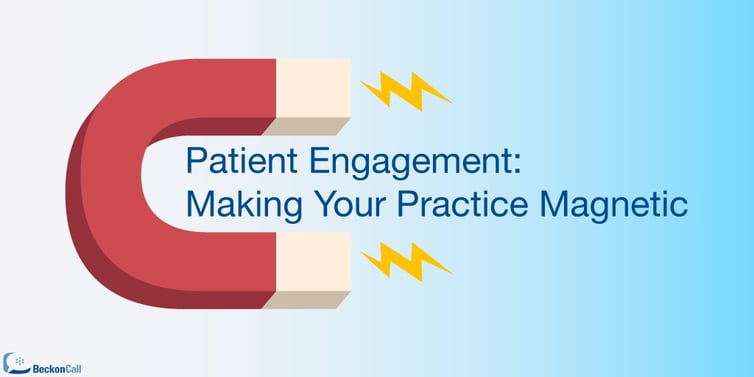 Posted by Dr. Becker on Mar 13, 2017 5:20:06 PM
Posted by Dr. Becker on Mar 13, 2017 5:20:06 PM

Good medical care can’t be a one-way street. Patients must engage in their own care, being proactive in minimizing the risk of problems where possible and adhering to prescribed therapies when things do go wrong. In addition to the primary goal of improving health, good patient engagement has the added benefit of building the relationship between your practice and the people coming to you for care. This has the potential to boost retention and referrals, making patient engagement programs a good business decision, as well. Furthermore, in the age of value-based care, improving outcomes is a critical piece of reimbursement. And when patients take control of their health, outcomes improve.
The trick is, of course, finding effective ways to increase patient engagement with your practice. This was a leading topic at the 2017 installment of the annual Health Information and Management Systems Society (HIMSS) that took place in Orlando in February.
According to Fierce Healthcare, sessions at HIMSS revolved around helping to make the transition from hospital to home seamless, which means a heavy reliance on digital tools. Indeed, the article just linked described it as “meeting patients where they are.” While there are plenty of not-too-distant-but-still-future innovations on the way to build patient engagement and improve continuity of care, what should medical practices be looking at now?
1. Telehealth
One, already noted, is to start looking at telehealth options. There are numerous services available for individual physicians to take on telehealth patients (for example, Teladoc recently announced that their platform served over 17 million members). In addition, and potentially more applicable to this audience, tools exist for integrating telehealth into medical practices. At its most basic, telehealth simply requires a good internet connection, web camera, and secure patient portal. Of course, being 2017, there are turnkey systems available to allow physicians to consult with patients remotely. For example, video conferencing software provider Polycom has an entire section of its business dedicated to the healthcare industry and helping medical professionals engage with patients.
2. Mobile apps
Another area for increasing patient engagement is through mobile apps. Some apps allow for communication between patient and practice, working essentially as a mobile portal. Others can provide interventions to help with adherence in between visits or after a hospital stay. Yet others utilize virtual reality, such as the My MRI At King’s app developed by King’s College Hospital to help kids get comfortable with MRI scans before they actually enter the machine.
It’s important to note that, while the number of health-related apps has increased in recent years, the reality hasn’t quite lived up to the promise. At least not yet. Early last year, a study by the Commonwealth Fund found that a only minority of mobile apps were likely to be useful in increasing patient engagement (43% of iOS apps and 27% of Android apps). However, any new technology needs time to work out the kinks. With more and more of life being conducted on smartphones, and with the increasing investment into health made by tech companies like Apple, Google and Microsoft, we expect a significant increase in patient adoption of mobile health tools in the next couple of years. Additionally, companies are working to build apps that can push and/or pull information to/from patients in order to engage them and increase compliance. For example, Epharmix has a research-backed platform that sends patient data back to the physician, and automated intervention reminders to the patient. It may not be “fun” or exciting, but it seems to be “meeting patients where they are.”
3. Gamification (contests and giveaways)
Gamification (i.e., contests and giveaways) can be a powerful mechanism to promote a desired outcome. For this discussion, that means both better health and greater engagement with your practice. So, for example, you could offer a prize to the patient who records the most steps each month using their smartphone or fitness watch. An app called Mango Health sets up rewards for completing health-related tasks. In that case, the gamification is built into the program, but you can take advantage of those features to set up your own rewards and bring your patients’ focus back to your practice.
4. Encourage feedback
Lastly (at least for the purposes of this blog, we could go on for a while), maybe the simplest way to engage your patients is to let them engage with you through good ol’ paper and pencil. As we have noted here before, giving patients a say in your practice can help them feel ownership of and affinity for your group. Surveys or some other form of immediate feedback might be a great way to help them feel exactly that.
What do you think? Have you experimented with new and creative ways to increase patient engagement at your practice? Leave a note and let us know how it went.
Please note that references to specific companies above do not represent endorsements, only examples. Also, be sure to talk to your lawyer/compliance expert before jumping on any new technology.
Topics: Practice Profitability